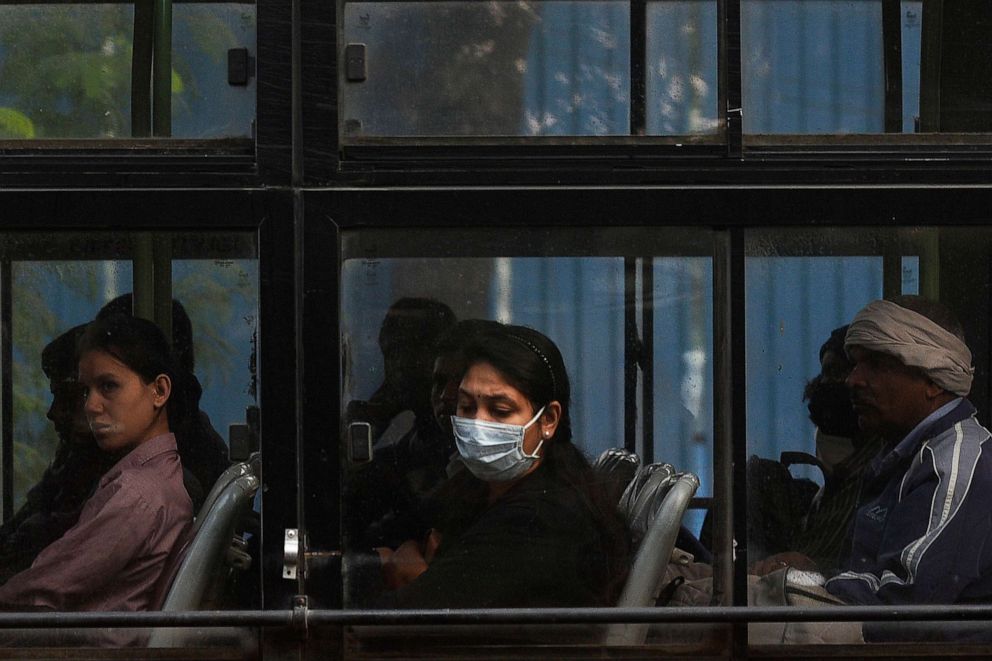In recent months, several unpublished papers exploring the link between air pollution and outbreaks of COVID-19 have been swept into the media frenzy surrounding the pandemic. In April, the New York Times reported on an unpublished paper from researchers at Harvard University, which concluded that there exists a positive correlation between long-term exposure to air pollution and the mortality rate of COVID-19.
In a recent commentary, Mark Goldberg, professor in the McGill Department of Epidemiology and Biostatistics, questioned the validity of such research studies. He cited inadequate sampling and biased spatial resolution, amongst other methodological shortcomings. The commentary, co-authored by Paul Villeneuve, professor in the School of Mathematics and Statistics at Carleton University, examined nine different epidemiological studies on the link between air pollution and coronavirus outbreaks, including the Harvard paper.
Underlying each study is the hypothesis that living in areas with higher levels of air pollution increases the mortality rate of individuals who have contracted severe acute respiratory syndrome (SARS) or COVID-19. Of the nine studies, only one rejected this hypothesis.
Goldberg first points out that incomplete data on COVID-19 cases renders the sampling methods used in these studies inadequate. Due to insufficient testing capacity in the early stages of the pandemic and the large number of asymptomatic carriers, these studies exclude a sizable proportion of COVID-19 patients.
The contagious nature of COVID-19 leads to outbreaks in clusters, which skewed the results of the nine studies. Such a pattern has been exhibited in outbreaks in a South Korean church, the Smithfield meat packing facility in South Dakota, and over 800 reported clusters in France.
“There are more important factors than air pollution [that affect COVID-19 mortality],” Villeneuve said in an interview with The McGill Tribune. “You can’t control for [the modes of transmission] in studies that use a county-level measure of air pollution and a county-level count of death.”
The commentary also criticizes the ecological design adopted by seven out of the nine selected papers. In epidemiology, ecological studies come with what is termed the “ecological fallacy,” usually resulting from inferences drawn about individuals from aggregate data. The fallacy is evident in the Harvard paper, for example. There, researchers assigned a single value to the average concentration of air pollution in 3,080 U.S. counties over a 17-year period and compared it against mortality rates. Although these counties vary drastically in area and population, the data does not reflect their heterogeneity.
“[It’s like] comparing apples with oranges,” Goldberg said in an interview with the Tribune, noting that, for this reason, ecological studies are generally frowned upon within the field of epidemiology.
Epidemiologists are still grappling with the high degree of uncertainty associated with an ongoing pandemic. Goldberg used the example of Montreal, where a Hasidic community was one of the first heavily impacted by a surge in COVID-19 cases following travel-related community transmission. The outbreak then shifted to senior homes and other disadvantaged communities.
Recently, younger populations who are generally less vulnerable to the more severe effects of COVID-19 have become substantial vectors for the virus as school and incautious social gatherings resume. Although new data has proved this to be true, Goldberg cautioned against conducting observational research in the midst of a pandemic.
“Who gets affected changes through time [.…] If you can’t take that into account, you can’t do a study,” Goldberg said.
Although Goldberg and Villeneuve’s commentary suggests adopting a longitudinal study design as a possible alternative for researching the effects of pollution on COVID-19 outbreaks, both authors remain pessimistic about publishing this research in real time. Instead, focussing on vaccine and therapeutic trials might be more helpful not only in the present, but for future prevention as well.
“We already know that we need to reduce and regulate [pollution] levels,” Villeneuve said. “What doing a study on pollution and COVID-19 does is it raises issues about air pollution research, and detracts from decades’ worth of research in the area.”








